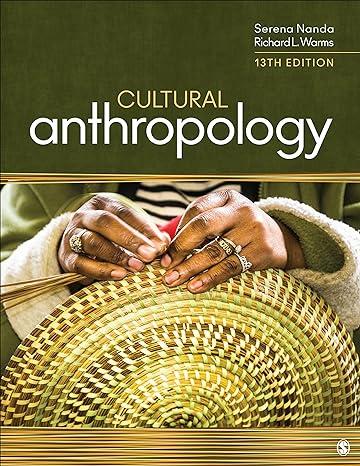Although sese relationships are generally not made public unless they become stable, sese is a culturally regulated
Question:
Although sese relationships are generally not made public unless they become stable, sese is a culturally regulated custom, the boundaries of which are clearly understood by all. There is no brute force or coercion in the Na visits. Either party may offer, accept, or decline an invitation for a visit. To spare the other's feelings, one may say, "Tonight is not possible. I already have one for tonight," and a woman may even turn away an invited lover at the door if she chooses. Jealousy is reported not to exist as any man can choose to visit any woman. But although either the woman or the man may initiate the visit, it is always the man who comes secretly to the woman's house. Concealment is necessary because of a \(\mathrm{Na}\) taboo forbidding a household's male members to hear or see any sexual talk or activities involving household females. Males will never answer the door after dark, lest they encounter a woman's lover. The lover himself makes every effort to avoid detection, often bringing food to prevent the guard dogs' barking, speaking only in whispers during intercourse, and leaving quietly before daybreak.
The \(\mathrm{Na}\) are a matrilineal society, and, as in many other matrilineal societies, children stay with the mother's household for their entire lives. The household includes both boys and girls by a variety of fathers and relatives of two or more generations. Ideas of motherhood and fatherhood are fluid. When a generation lacks females, a situation that threatens the continuity of the household, a household may adopt a relative's child or encourage a son to bring his lover into the household.
The males in a \(\mathrm{Na}\) household are boy children born in the various generations who are brothers, uncles, and granduncles. Unlike some other matrilineal societies, Na families have no husbands, fathers, nuclear families, or structures of affinal relationships such as in-laws. The \(\mathrm{Na}\) consider the matrilineal household as the family, and both household and family are diverse and flexible.
Questions
1. Can you envision a society without marriage? What do you think that society would look like?
2. What are some of the advantages and disadvantages, from the Na point of view, of their system of "walking marriage" and matrilineal families?
3. How well adapted is the \(\mathrm{Na}\) family to the industrial and postindustrial world? Are there reasons why \(\mathrm{Na}\) family structure would be unlikely to succeed in a modern city?
Step by Step Answer:






